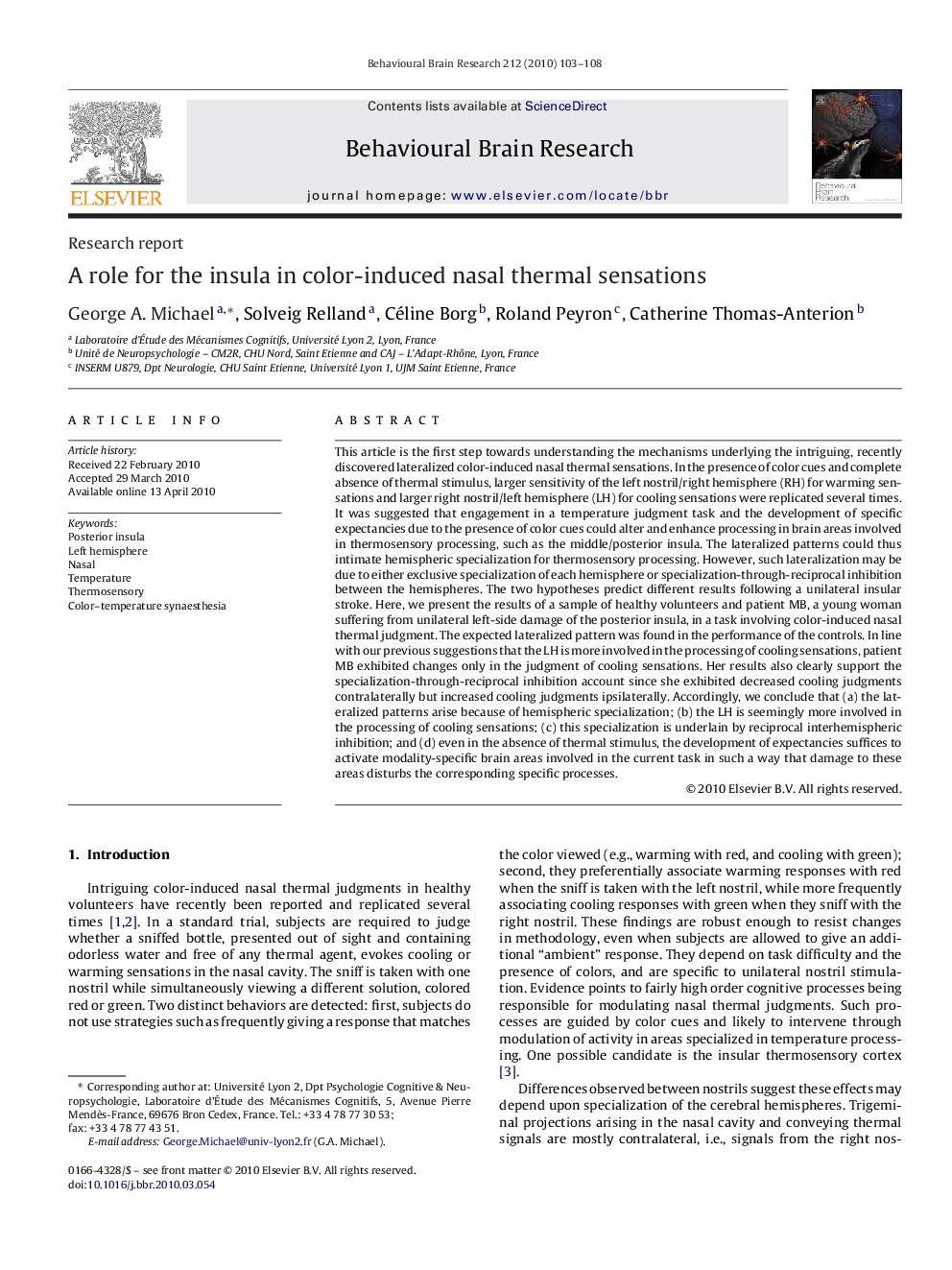| Article ID | Journal | Published Year | Pages | File Type |
|---|---|---|---|---|
| 4314211 | Behavioural Brain Research | 2010 | 6 Pages |
This article is the first step towards understanding the mechanisms underlying the intriguing, recently discovered lateralized color-induced nasal thermal sensations. In the presence of color cues and complete absence of thermal stimulus, larger sensitivity of the left nostril/right hemisphere (RH) for warming sensations and larger right nostril/left hemisphere (LH) for cooling sensations were replicated several times. It was suggested that engagement in a temperature judgment task and the development of specific expectancies due to the presence of color cues could alter and enhance processing in brain areas involved in thermosensory processing, such as the middle/posterior insula. The lateralized patterns could thus intimate hemispheric specialization for thermosensory processing. However, such lateralization may be due to either exclusive specialization of each hemisphere or specialization-through-reciprocal inhibition between the hemispheres. The two hypotheses predict different results following a unilateral insular stroke. Here, we present the results of a sample of healthy volunteers and patient MB, a young woman suffering from unilateral left-side damage of the posterior insula, in a task involving color-induced nasal thermal judgment. The expected lateralized pattern was found in the performance of the controls. In line with our previous suggestions that the LH is more involved in the processing of cooling sensations, patient MB exhibited changes only in the judgment of cooling sensations. Her results also clearly support the specialization-through-reciprocal inhibition account since she exhibited decreased cooling judgments contralaterally but increased cooling judgments ipsilaterally. Accordingly, we conclude that (a) the lateralized patterns arise because of hemispheric specialization; (b) the LH is seemingly more involved in the processing of cooling sensations; (c) this specialization is underlain by reciprocal interhemispheric inhibition; and (d) even in the absence of thermal stimulus, the development of expectancies suffices to activate modality-specific brain areas involved in the current task in such a way that damage to these areas disturbs the corresponding specific processes.
